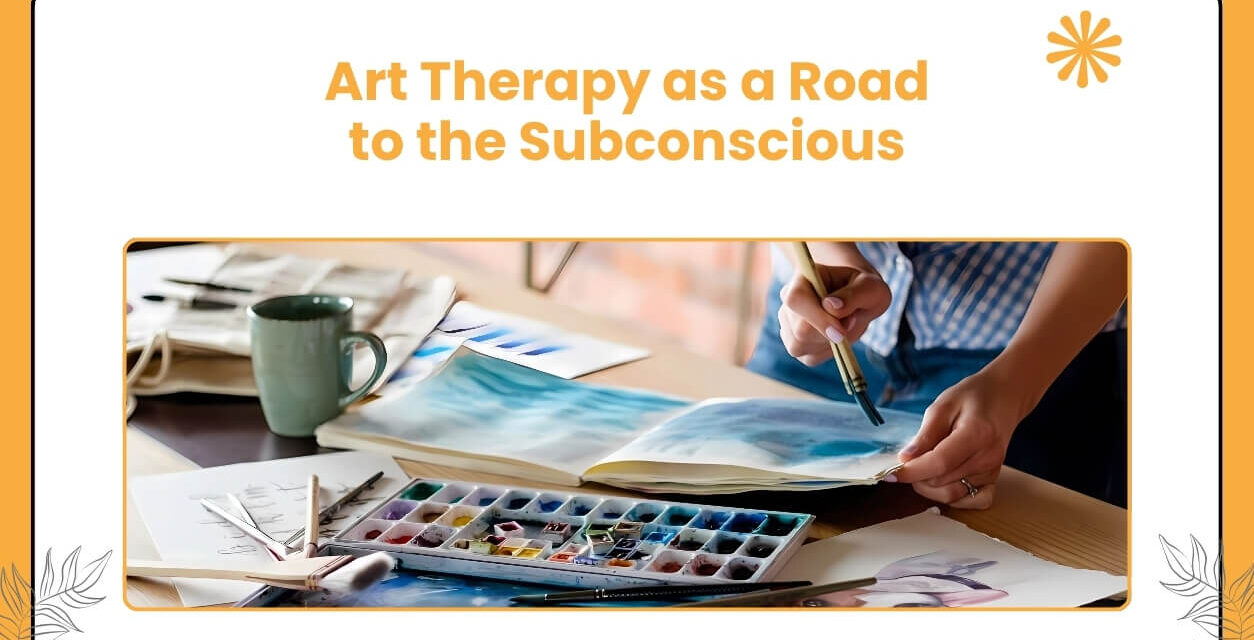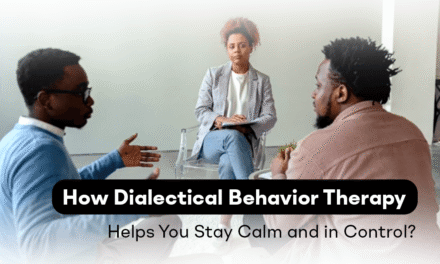There are moments when words feel too weak and feeble to carry the weight of what lives inside us. This is where art therapy begins to reveal its power.
Far more than paint on canvas or clay shaped between restless hands, it is a practice that opens a door to the subconscious, which is the place where unspoken emotions, forgotten memories, and truths reside.
By creating rather than explaining, people often discover hidden layers of themselves that daily life rarely allows them to touch.
What Is Art Therapy?
Trying to talk about emotions can feel tricky. It’s just like explaining a movie you only remember partially. You know what you felt, but you can’t find the right words to describe it. Art therapy lets you express those emotions through drawing, painting, or creating instead of talking. But what is art therapy?
Simply put, it is the use of creative expression as a tool for self-discovery, emotional release, and psychological growth. Rather than focusing on artistic skill, the emphasis is on the process of making art and noticing the insights that surface along the way.
By using colors, textures, and images, people find themselves uncovering thoughts that cannot be expressed through letters and numbers.
How Art Therapy Works?
The process of art therapy is guided by a trained therapist who helps individuals use artistic expression as a bridge to their inner world. Unlike traditional talk therapy, the emphasis is not on creating a “perfect” drawing or sculpture but on the act of creating itself.
Through art therapy techniques such as painting, sketching, collage, or even movement with colors and textures, people are encouraged to let intuition lead the way.
The therapist observes not only the artwork but also the choices made during its creation, such as color selections, shapes, pressure of strokes, or recurring patterns. Each of these elements can point to emotions or experiences the individual may not be consciously aware of.
Eventually, this creative exploration becomes a safe channel to express feelings that might otherwise remain suppressed, helping people work through anxiety, grief, trauma, or simply the everyday complexities of being human.
Art Therapy and the Subconscious Mind
The subconscious mind often carries fragments of experiences that do not surface easily through direct conversation. Art therapy for healing offers a pathway into this hidden territory by bypassing rational filters and tapping into symbolic expression.
For example, a person who struggles to articulate feelings of fear might draw shadowy figures or fragmented shapes without realizing what they represent at first. These symbols become a language of their own, one that reveals emotional truths stored beneath conscious thought.
By reflecting on the imagery together with the therapist, individuals begin to recognize patterns and associations that link the artwork to real-life emotions or memories. This process transforms into a form of subconscious therapy and allows the hidden mind to speak in a way that words cannot.
Most of the time, it leads to profound moments of self-discovery to support emotional healing and deepening personal awareness. In this way, art therapy makes the invisible layers of the mind visible through creative expression.
Tara’s Journey with Art Therapy
Some people, when struggling with mental illnesses, tend to believe that they are alone in their pain. But that is rarely the case. Art therapy examples and case studies can be useful in such moments because they can help provide insight into other people’s struggles and help you overcome your own. Such is the story of Tara.
Tara (not her real name), a woman in her late 50s, began therapy with me following a series of painful and life-altering events: a recent job loss, a once-fulfilling marriage now strained by medical issues and financial hardship, and a long history within a familial culture that often felt diminishing. What began with detailed stories and soon transformed into expressive artworks, Tara began to revisit moments from her past where life felt romantic, where she was as free on the outside as she felt on the inside. Upon first impressions, what was evident through her dialogues was a desperate need for a sense of purpose, a sense of connection. More importantly, there was a whisper of rebellion, a quiet strength that longed to be seen.
What sets art therapy apart from more traditional approaches is that it’s often guided by something subconscious—creativity. Through creative expression, we’re able to step outside of black-and-white thinking. We experience a person’s story not in terms of “good” or “bad,” “healthy” or “unhealthy,” but in the deeply complicated grayscale that makes life what it is: layered, complex, and meaningful.
Through Tara’s artwork, we were able to bring to life the pain she felt she needed to hide in order to play the role of a “strong and capable” woman, as well as the parts of her that made her undeniably just that. In this case, and in many others, Tara’s art became both a release and a reflection—a tangible record of her story, and a totem of her resilience.
As therapy progressed, Tara’s art helped us navigate towards a more vulnerable place. The focus began to shift toward her mother—specifically, the pain surrounding her loss. Tara was eager to bring her mother’s artwork into sessions, recreating these pieces, and in one way or another, bringing her mother and the support that she was back into Tara’s life. Thanks to the safe space that we had now cultivated, Tara was able to speak aloud the shattering images of her mother’s death, and the aching disconnection that had swallowed her into a life she no longer recognized as her own. Tara had been moving through her days tethered to the grief of a mother she could not save, seeking resolution through relationships that, while meeting a deep need for familiarity, had quietly muted her truth—her desires that longed to be lived.
In Tara’s case, art therapy helped us give voice to an event that had left her stuck, while gently tracing the patterns that continued to feed that feeling. After moving through the pain and finally giving voice to what had long lived inside her, Tara began to feel something different: space. With that space came a more manageable tolerance for change, for uncertainty. And from there, Tara began taking small, intentional steps in her daily life toward the version of herself she had always longed to become. Not perfectly, not all at once—but in a way that felt real, lived, and hers.
Using Creativity to Process Trauma
Trauma often lingers in ways that words alone cannot capture. Memories may feel fragmented, overwhelming, or even unreachable, making traditional talk therapy challenging. This is where creative therapy for mental health plays a powerful role.
The act of creating provides both distance and safety, and it allows someone to place their emotions outside of themselves and into a tangible form. These expressions can help individuals identify recurring patterns, recognize underlying fears, and slowly reclaim a sense of control.
How art therapy works for trauma and grief is not about producing beautiful pieces of art, but about offering the mind and body a safe outlet to process painful experiences. Through this method, creativity becomes a bridge toward resilience and deeper emotional understanding.
Finding Healing Through Artistic Expression
Healing is not always a linear journey. For a lot of people, it involves uncovering emotions that have been buried or ignored for years. Expressive art therapy for emotional healing creates space for this kind of exploration and encourages people to use colors, images, and textures as a language for what they feel inside. This process not only validates feelings but also allows individuals to view them from a new perspective.
Benefits of Art Therapy for Adults
Life often leaves little room to pause and process the emotions we carry. This is where art therapy for adults offers a meaningful way to reconnect with the inner self and helps individuals manage stress and heal from past experiences.
With the help of creativity as a tool, therapy opens a channel to the subconscious and encourages deeper self-understanding.
Emotional Healing and Stress Relief
One of the most significant benefits of art therapy lies in its ability to ease emotional tension and provide calm in the midst of daily pressures. Through abstract art, people can release feelings that are difficult to put into words and instead allow images, colors, and textures to tell the story.
By embracing the role of creativity in therapy, adults gain access to a healing process that silences the mind while strengthening emotional resilience. Here is what else it can do.
- Encourages safe release of suppressed emotions
- Reduces anxiety and promotes relaxation
- Supports individuals in navigating grief and loss
Building Self-Awareness and Resilience
Healing is not all about reducing pain. Instead, it goes above and beyond to ensure that you grow stronger. Art therapy for adults helps people recognize patterns in their emotions and behaviors, which helps foster greater self-awareness.
This insight becomes a foundation for resilience, which is the ability to face challenges without being consumed by them. It also helps you achieve the following.
- Helps individuals identify emotional triggers and recurring themes
- Strengthens coping strategies through nonverbal expression
- Encourages self-compassion and acceptance
- Offers tools for navigating conflict, especially when paired with the guidance of a professional.
Is Art Therapy Right for You?
Deciding whether art therapy is the right path often depends on your personal needs and the challenges you are facing.
Unlike traditional approaches that rely heavily on conversation, this form of therapy invites creativity as a guide. It does not require artistic skill; rather, it requires only a willingness to explore and express. It may eventually become a gentle yet powerful way to address emotions that feel overwhelming or too complex to explain.
You may find subconscious healing through art helpful if you exhibit the following.
- Struggle to express emotions verbally
- Carry unresolved grief, trauma, or stress
- Want to explore the root of recurring thoughts or behaviors
- Seek new ways to manage anxiety or depression
- Desire deeper self-awareness and personal growth
Final Thoughts: Art Therapy as a Path to Self-Discovery
At its heart, art therapy does not mean that you create masterpieces. Instead, it pushes you to uncover the deeper layers of yourself. Through colors, textures, and symbols, it provides a safe space where hidden emotions can surface.
This process often leads to greater clarity, resilience, and inner peace. If you are seeking a connection with your subconscious mind, art therapy offers healing and a powerful journey toward genuine self-discovery.
FAQs
What is the purpose of art therapy?
The purpose of art therapy is to provide a safe, creative outlet for exploring thoughts and emotions that may be difficult to express verbally. It helps individuals manage stress, heal from emotional pain, and build stronger self-awareness.
How does art therapy access the subconscious mind?
Art therapy allows people to express themselves through images, symbols, and colors rather than direct words. This process naturally bypasses logical filters and taps into hidden layers of thought. The artwork often reveals patterns, emotions, or memories connected to the subconscious.
Can art therapy help with grief and trauma?
Yes, art therapy has proven especially effective in addressing grief and trauma. Creating art offers a safe space to process painful emotions, release suppressed feelings, and gradually make sense of overwhelming experiences. Whether through painting, drawing, or sculpting, the process allows individuals to express what feels impossible to say aloud, often bringing relief and a renewed sense of inner strength.
Is art therapy only for children, or can adults benefit too?
Although art therapy is often associated with children, it is highly effective for adults as well. Art therapy for adults can support emotional healing, reduce stress, and strengthen resilience. Adults may find it especially useful for uncovering subconscious emotions or exploring personal challenges in a new way. It does not depend on age but on the willingness to engage in creative exploration.
Do I need to be an artist to try art therapy?
Not at all. The goal of art therapy is not to create a beautiful painting or polished sculpture but to explore feelings and ideas through creative expression. No artistic skill is required. The focus is on the process, not the product, which makes it accessible for anyone, regardless of experience with art.
How long does it take to see results from art therapy?
The timeline varies depending on the individual and the goals of therapy. Some people feel relief or clarity after just a few sessions, while others may need ongoing work to address deeper issues. Consistency often plays an important role, as regular sessions provide space for gradual progress.





